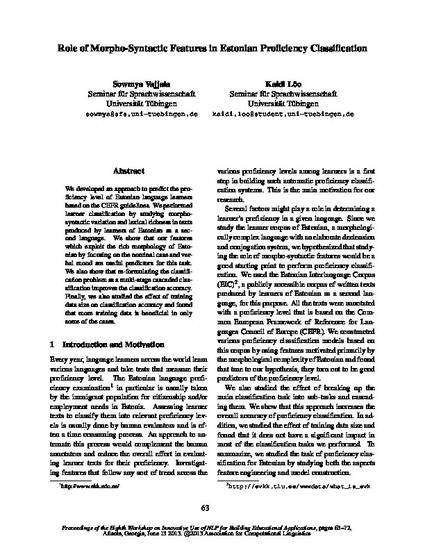
Presentation
Role of Morpho-Syntactic Features in Estonian Proficiency Classification
Proceedings of the Eighth Workshop on Innovative Use of NLP for Building Educational Applications
(2013)
Abstract
We developed an approach to predict the proficiency level of Estonian language learners based on the CEFR guidelines. We performed learner classification by studying morphosyntactic variation and lexical richness in texts produced by learners of Estonian as a second language. We show that our features which exploit the rich morphology of Estonian by focusing on the nominal case and verbal mood are useful predictors for this task. We also show that re-formulating the classification problem as a multi-stage cascaded classification improves the classification accuracy. Finally, we also studied the effect of training data size on classification accuracy and found that more training data is beneficial in only some of the cases.
Disciplines
Publication Date
June, 2013
Location
Atlanta, GA
Comments
Copyright 2013 The Authors
Citation Information
Sowmya Vajjala and Kaidi Loo. "Role of Morpho-Syntactic Features in Estonian Proficiency Classification" Proceedings of the Eighth Workshop on Innovative Use of NLP for Building Educational Applications (2013) Available at: http://works.bepress.com/sowmya-vajjala/12/
